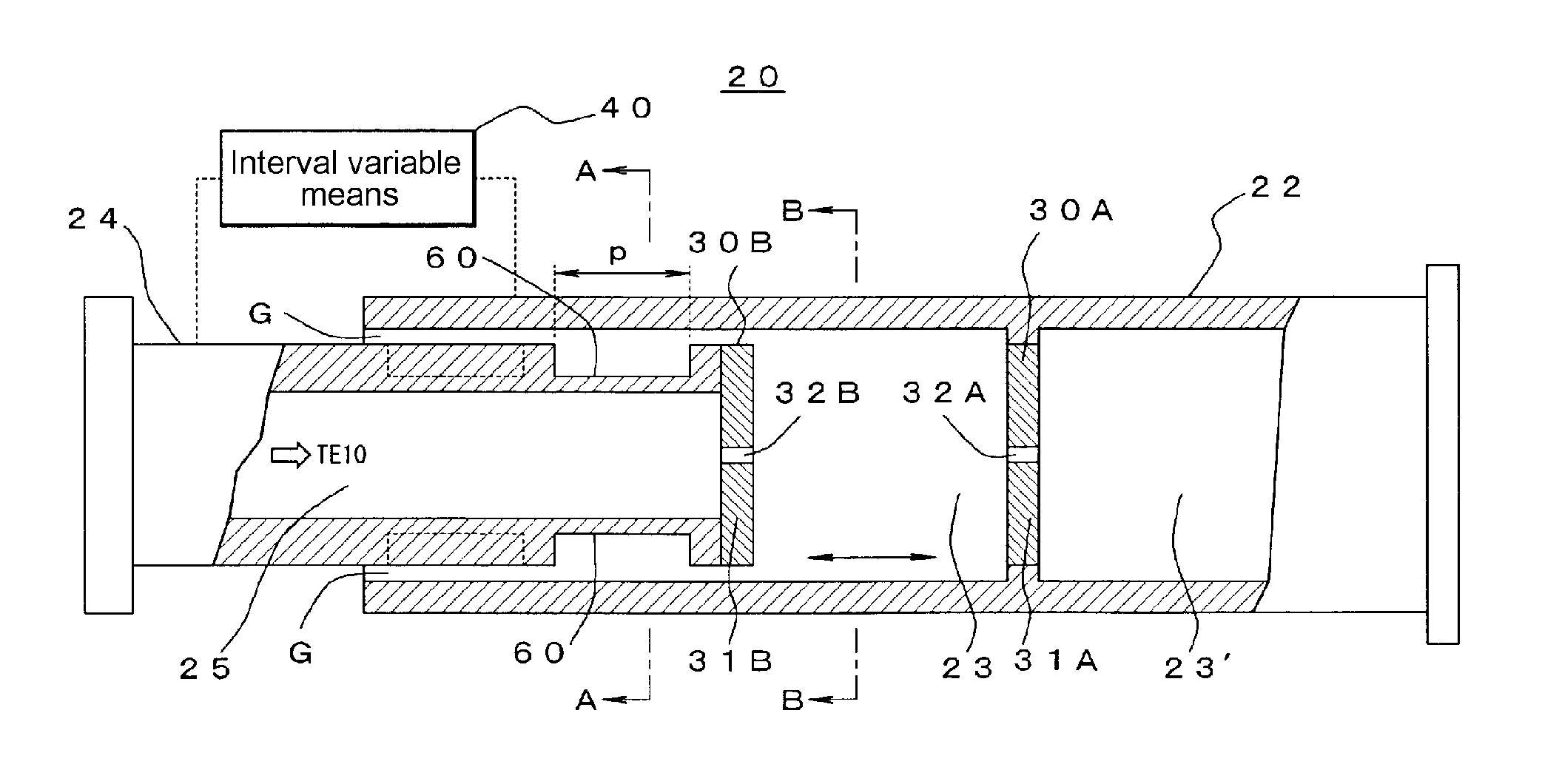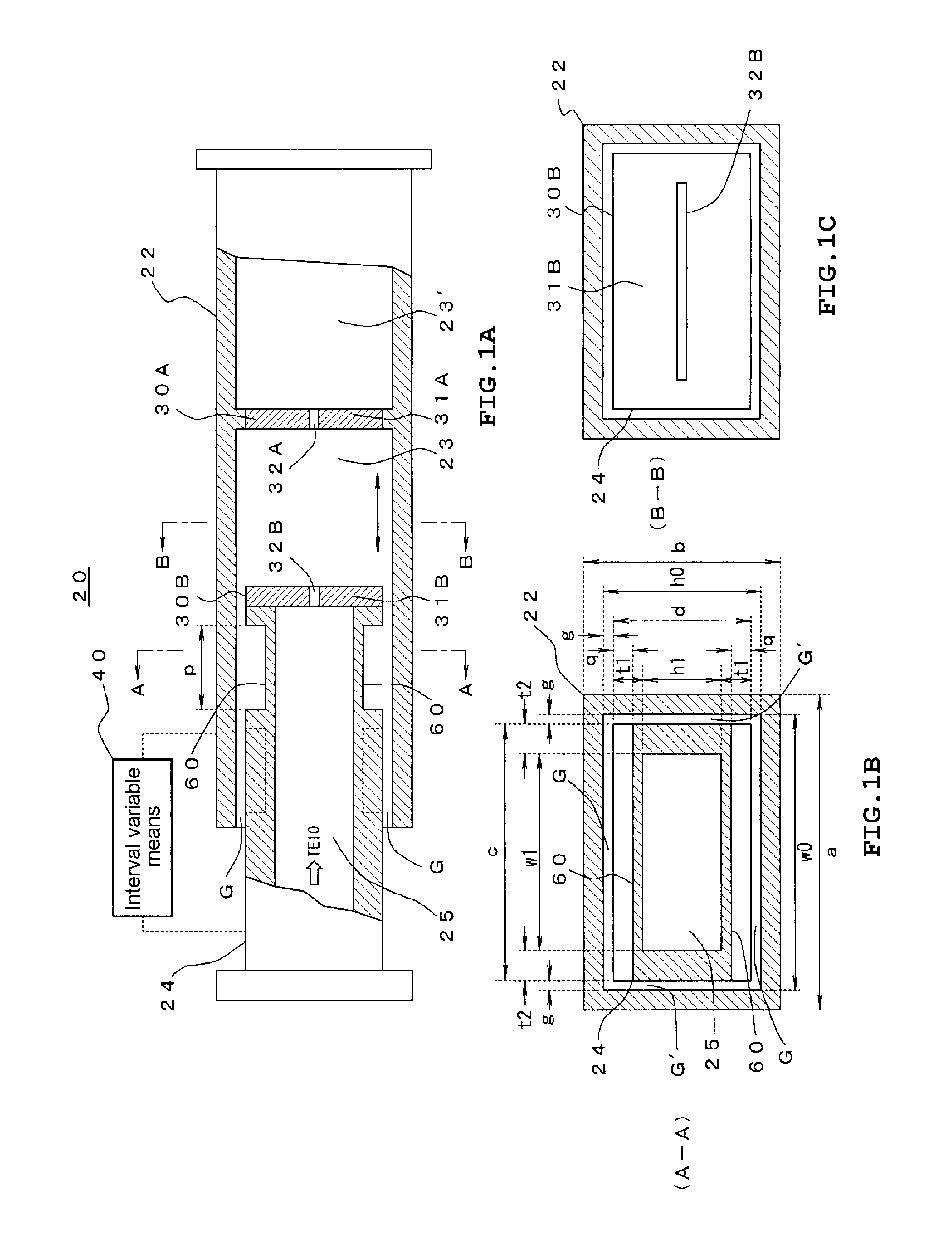Millimeter waveband filter
- Summary
- Abstract
- Description
- Claims
- Application Information
AI Technical Summary
Benefits of technology
Problems solved by technology
Method used
Image
Examples
Example
[0045]Hereinafter, an embodiment of the invention will be described referring to the drawings.
[0046]FIGS. 1A to 1C show the basic structure of a millimeter waveband filter 20 of the invention. FIG. 1A is a diagram when a part of the millimeter waveband filter 20 is fractured from the side, FIG. 1B is a sectional view taken along the line A-A of FIG. 1A, and FIG. 1C is a sectional view taken along the line B-B of FIG. 1A.
[0047]As shown in FIGS. 1A to 1C, the millimeter waveband filter 20 has a first waveguide 22, a second waveguide 24, a pair of electric wave half mirrors 30A and 30B, and interval variable means 40.
[0048]The first waveguide 22 is a square waveguide which has a transmission line 23 having a rectangular sectional shape allowing electromagnetic waves in a predetermined frequency range (for example, 75 to 110 GHz) of a millimeter waveband to propagate in a TE10 mode (single mode). For example, a WR-10 waveguide having a size of w0×h0=2.54×1.27 mm can be used. In FIGS. 1A...
PUM
 Login to view more
Login to view more Abstract
Description
Claims
Application Information
 Login to view more
Login to view more - R&D Engineer
- R&D Manager
- IP Professional
- Industry Leading Data Capabilities
- Powerful AI technology
- Patent DNA Extraction
Browse by: Latest US Patents, China's latest patents, Technical Efficacy Thesaurus, Application Domain, Technology Topic.
© 2024 PatSnap. All rights reserved.Legal|Privacy policy|Modern Slavery Act Transparency Statement|Sitemap



